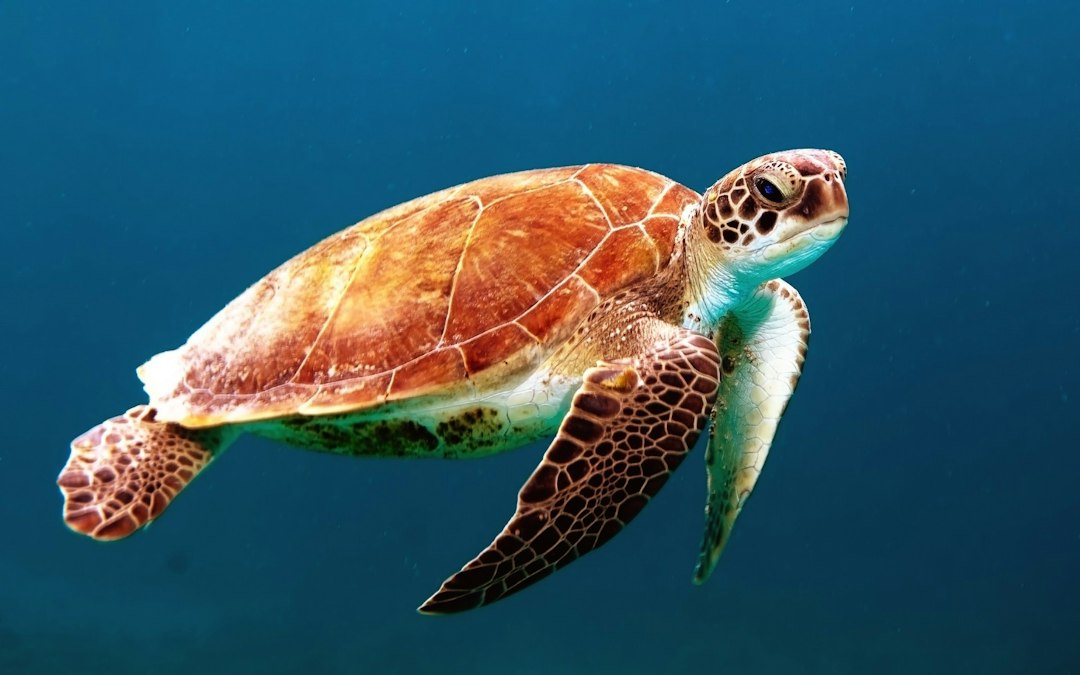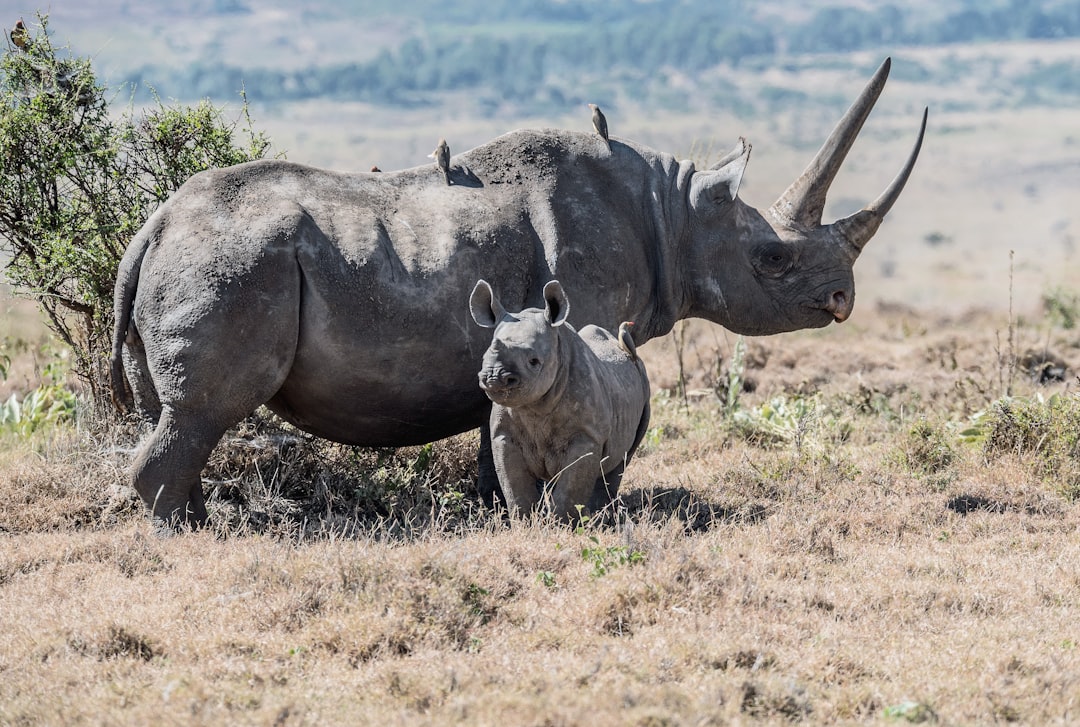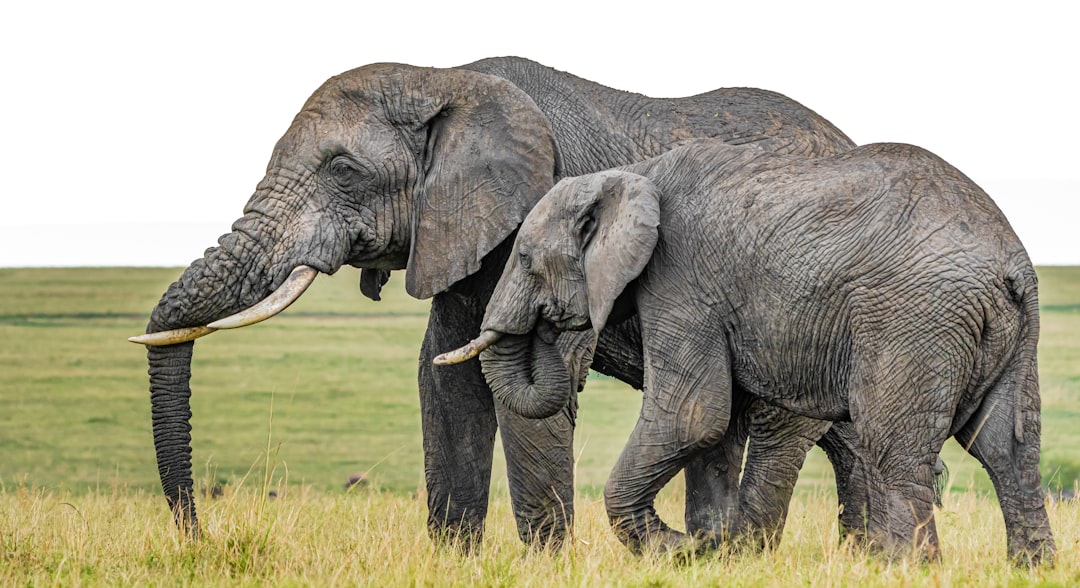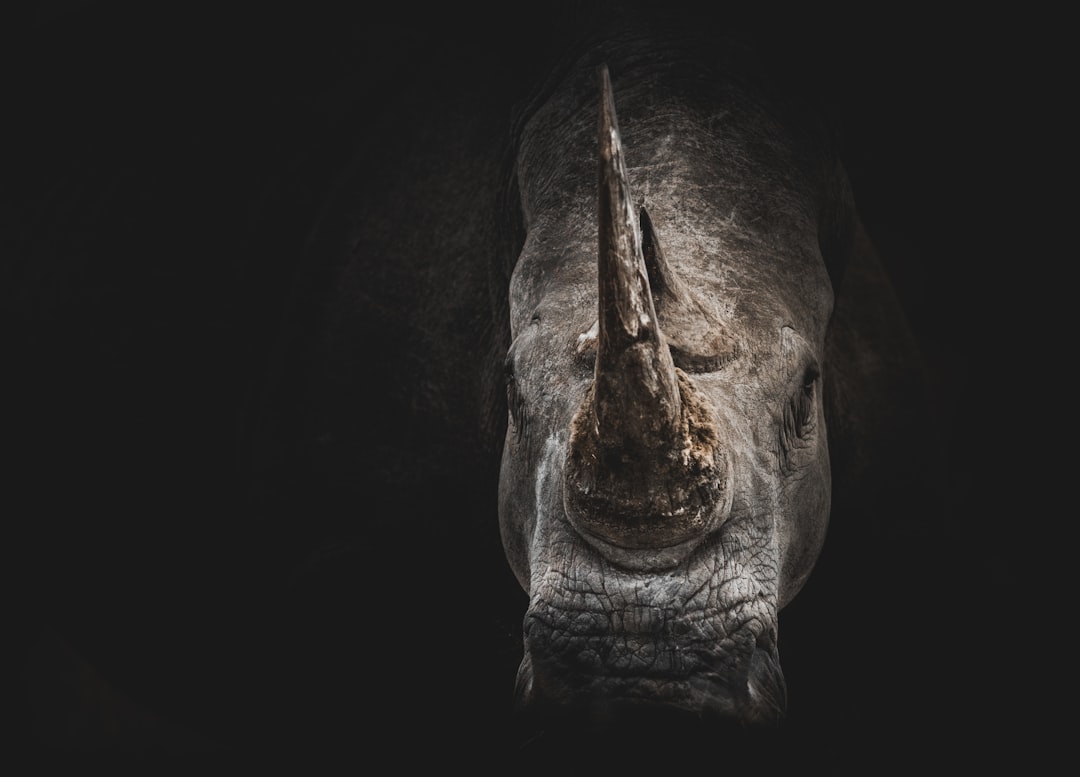Welcome to our blog post on the fascinating intersection of wildlife conservation and artificial intelligence (AI). In this increasingly interconnected world, the preservation and protection of our natural ecosystems have become more critical than ever before. As human activities continue to impact the delicate balance of our planet’s biodiversity, innovative approaches are needed to ensure the survival of various species and their habitats.
Enter AI, a field of computer science that aims to create intelligent machines capable of simulating human intelligence. While AI has revolutionized various industries, from healthcare to finance, its potential in wildlife conservation is only starting to be explored. By harnessing the power of AI, researchers, conservationists, and organizations can gather crucial data, analyze complex patterns, and develop effective strategies to safeguard vulnerable species and ecosystems.
In this blog post, we will delve into the importance of wildlife conservation and provide an overview of AI, highlighting its potential applications in this field. We will explore the benefits and limitations of using AI in wildlife conservation, showcasing case studies that demonstrate its effectiveness. By the end, you will have a deeper understanding of how AI can contribute to the preservation of our planet’s invaluable biodiversity.
Importance of Wildlife Conservation
Wildlife conservation plays a pivotal role in maintaining the delicate balance of our ecosystem. It encompasses the protection and preservation of various animal and plant species, their habitats, and the ecological processes that allow them to thrive. As humans, we depend on the interconnectedness of these ecosystems for our own survival and well-being.
The importance of wildlife conservation cannot be overstated. It is not merely about protecting charismatic or endangered species; it is about safeguarding the entire web of life that sustains us all. By conserving wildlife, we are ensuring the preservation of biodiversity, which is crucial for maintaining the stability and resilience of our planet.
Biodiversity, the incredible variety of life on Earth, provides numerous benefits to humans. It contributes to the stability of ecosystems, improves the quality of air and water, pollinates crops, and supports the development of new medicines. Moreover, wildlife conservation helps maintain the balance of ecological processes such as nutrient cycling, soil formation, and climate regulation. These processes are fundamental to the health and functioning of our planet.
Additionally, wildlife conservation has cultural and aesthetic value. Many species hold deep cultural significance for indigenous communities around the world, and their loss would diminish the richness and diversity of human culture. Furthermore, the beauty and wonder of wildlife inspire us, fostering a sense of connection with the natural world and reminding us of our place within it.
However, despite the evident importance of wildlife conservation, numerous threats continue to jeopardize the survival of countless species. Habitat destruction, climate change, pollution, poaching, and illegal wildlife trade are just a few of the challenges that wildlife faces today.
This is where the potential of artificial intelligence (AI) comes into play. AI, with its ability to process vast amounts of data and analyze complex patterns, offers new opportunities to enhance wildlife conservation efforts and address these challenges more effectively.
Many species hold deep cultural significance for indigenous communities around the world, and their loss would diminish the richness and diversity of human culture.
Overview of Artificial Intelligence (AI)
Artificial Intelligence (AI) is a field of computer science that focuses on creating intelligent machines capable of performing tasks that typically require human intelligence. It involves developing computer systems that can learn, reason, perceive, and make decisions autonomously. AI algorithms aim to mimic human cognitive abilities, such as problem-solving, pattern recognition, and decision-making, but with greater efficiency and accuracy.
AI can be broadly classified into two categories: narrow or weak AI, and general or strong AI. Narrow AI refers to systems designed to perform specific tasks, such as image recognition, natural language processing, or playing chess. These systems excel in their specific domains but lack human-like general intelligence. On the other hand, general AI aims to build machines that possess the same level of intelligence and versatility as humans, capable of understanding and performing any intellectual task.
The development of AI has been driven by advancements in machine learning, big data, and computing power. Machine learning is a subset of AI that enables machines to learn from data and improve their performance without being explicitly programmed. Through training on vast amounts of data, AI systems can recognize complex patterns and make predictions or decisions based on this learned knowledge.
AI has gained significant attention and popularity in recent years due to its potential to revolutionize various industries, including wildlife conservation.
AI technologies such as computer vision, natural language processing, and machine learning algorithms play a crucial role in analyzing and interpreting large volumes of data collected in the field of wildlife conservation. By leveraging AI, researchers and conservationists can gain valuable insights into the behavior, population dynamics, and habitat preferences of different species, aiding in the development of effective conservation strategies.
Furthermore, AI enables the automation of tasks that would otherwise be time-consuming and resource-intensive. With AI-powered tools, conservationists can process and analyze data more efficiently, freeing up their time to focus on other critical aspects of their work.
While AI holds immense potential in wildlife conservation, it is essential to consider its benefits and limitations, which we will explore in the following sections of this blog post.
AI technologies such as computer vision, natural language processing, and machine learning algorithms play a crucial role in analyzing and interpreting large volumes of data collected in the field of wildlife conservation.
Applications of AI in Wildlife Conservation
Artificial intelligence (AI) has emerged as a powerful tool that holds immense potential for revolutionizing various industries, and wildlife conservation is no exception. By leveraging the capabilities of AI, conservationists and researchers are able to tackle complex challenges and make significant strides towards protecting and preserving our precious wildlife. In this section, we will delve into the diverse applications of AI in the realm of wildlife conservation.
One of the primary applications of AI in wildlife conservation is in the field of monitoring and surveillance. Traditional methods of monitoring wildlife populations often involve manual efforts that are time-consuming, labor-intensive, and prone to errors. However, with the advent of AI, researchers can now use advanced algorithms to analyze vast amounts of data obtained from various sources, such as satellite imagery, camera traps, and acoustic sensors.
AI algorithms can sift through these data sets, identifying and categorizing different species, estimating population sizes, and detecting patterns and anomalies. This not only saves valuable time and resources but also enables conservationists to obtain more accurate and reliable information about the status and distribution of wildlife populations. By gaining a deeper understanding of species dynamics, conservation efforts can be targeted more effectively, ensuring the implementation of appropriate measures to protect endangered species and their habitats.
Another significant application of AI in wildlife conservation is in the field of wildlife behavior analysis. By analyzing data collected from remote cameras and other monitoring devices, AI algorithms can learn to identify specific behaviors exhibited by different species. For instance, researchers can train AI models to recognize the hunting patterns of predators, the mating rituals of certain bird species, or the migration routes of marine animals.
This knowledge can be instrumental in understanding the ecological roles of different species, their interactions with their environment, and even predicting their responses to environmental changes. By comprehending wildlife behavior more comprehensively, conservationists can develop strategies that promote the long-term sustainability of ecosystems and mitigate potential threats to biodiversity.
Furthermore, AI can also be used in the development of predictive models that aid in the prevention of wildlife poaching and illegal trade. By analyzing historical data related to poaching incidents, AI algorithms can identify patterns and hotspots, enabling law enforcement agencies to allocate their resources more effectively. Additionally, AI-powered image recognition systems can be employed to detect and flag online platforms where illegal wildlife trade occurs, facilitating the identification and apprehension of perpetrators.
The application of AI in wildlife conservation is not limited to terrestrial ecosystems. In marine conservation, AI algorithms can analyze underwater footage obtained from remotely operated vehicles (ROVs) and autonomous underwater vehicles (AUVs) to identify and track marine species, assess the health of coral reefs, and monitor the impacts of human activities on marine environments. By leveraging AI, marine conservationists can gain valuable insights into the complex dynamics of underwater ecosystems, aiding in the formulation of strategies to protect marine biodiversity.
AI has emerged as a game-changer in the field of wildlife conservation. Its applications span across various aspects of conservation efforts, from monitoring and surveillance to behavior analysis and predictive modeling. By harnessing the power of AI, conservationists can make more informed decisions, allocate resources efficiently, and implement targeted measures to safeguard our planet’s diverse array of species. However, it is crucial to acknowledge the limitations of AI and ensure that its implementation is accompanied by ethical considerations and human expertise. With continued advancements in AI technology, the future of wildlife conservation looks promising and holds the potential to make a lasting impact on the preservation of our natural heritage.
Additionally, AI-powered image recognition systems can be employed to detect and flag online platforms where illegal wildlife trade occurs, facilitating the identification and apprehension of perpetrators.
Benefits and Limitations of AI in Wildlife Conservation
Artificial intelligence (AI) has emerged as a powerful tool in the field of wildlife conservation, offering numerous benefits and opportunities. However, it is important to acknowledge that AI also has its limitations and challenges. In this section, we will explore both the advantages and drawbacks of utilizing AI in wildlife conservation efforts.
Benefits of AI in Wildlife Conservation
1. Efficient Data Collection and Analysis: One of the major benefits of AI in wildlife conservation is its ability to collect and analyze vast amounts of data in a short period of time. AI algorithms can process data from various sources such as satellite imagery, camera traps, and acoustic sensors, enabling researchers to obtain valuable insights about wildlife populations, behavior, and habitats. This efficiency allows conservationists to make informed decisions and develop effective strategies for protecting endangered species.
2. Enhanced Monitoring and Surveillance: AI-powered technologies such as drones and remote sensors can be used to monitor wildlife populations and detect illegal activities such as poaching and habitat destruction. These advanced monitoring systems can cover large areas and provide real-time data, enabling authorities to respond quickly and prevent further damage to ecosystems. AI algorithms can also help in identifying patterns and predicting potential threats, allowing for proactive conservation measures.
3. Species Identification and Tracking: AI algorithms have shown remarkable capabilities in species identification, even in complex and diverse ecosystems. By analyzing images and sounds, AI can accurately identify different species, including those that are difficult to distinguish visually. This technology can aid in population monitoring, tracking migration patterns, and assessing the impact of environmental changes on specific species.
4. Conservation Planning and Resource Allocation: AI can assist in optimizing conservation efforts by analyzing complex data sets and generating models to predict the most effective strategies. By considering various factors such as habitat suitability, biodiversity hotspots, and connectivity between protected areas, AI algorithms can help in identifying priority areas for conservation and allocating resources efficiently. This data-driven approach can significantly improve the effectiveness of conservation initiatives.
Limitations and Challenges of AI in Wildlife Conservation
1. Data Bias and Quality: AI algorithms heavily rely on high-quality and unbiased data for accurate predictions and analysis. However, in the field of wildlife conservation, data can be scarce, incomplete, or biased due to various factors such as limited sample sizes, uneven distribution of monitoring efforts, and technical limitations. This can introduce errors and uncertainties in AI models, potentially leading to flawed conclusions and decisions.
2. Ethical Considerations: The use of AI in wildlife conservation raises ethical concerns, particularly regarding privacy and the potential harm to individual animals. AI technologies that involve tracking and monitoring wildlife must carefully balance the benefits of data collection with the welfare of the animals. Additionally, there is a need for transparency and accountability in the development and deployment of AI systems to ensure that they are used responsibly and ethically.
3. Technological Limitations: While AI has made significant advancements, there are still technological limitations that hinder its full potential in wildlife conservation. For example, the accuracy of AI algorithms in species identification may vary depending on the quality of input data and the complexity of the ecosystem. Furthermore, the deployment of AI technologies in remote and challenging environments can be logistically and financially demanding, limiting their widespread implementation.
4. Human Expertise and Interpretation: AI should be seen as a tool that complements human expertise rather than replacing it. While AI algorithms can process and analyze data efficiently, human interpretation and domain knowledge are crucial for contextual understanding and decision-making. Conservationists and researchers play a vital role in validating and interpreting the results generated by AI, ensuring that the insights are translated into effective conservation actions.
AI offers significant benefits in wildlife conservation, including efficient data collection, enhanced monitoring, accurate species identification, and optimized conservation planning. However, it is important to consider the limitations and challenges associated with AI, such as data bias, ethical considerations, technological constraints, and the need for human expertise. By leveraging the strengths of AI and addressing these limitations, we can harness the potential of this technology to drive meaningful and impactful conservation efforts for the preservation of our precious wildlife.
This data-driven approach can significantly improve the effectiveness of conservation initiatives.
Case Studies Showcasing AI in Wildlife Conservation
As we delve deeper into the realm of wildlife conservation, it becomes increasingly evident that technology, specifically artificial intelligence (AI), plays a vital role in safeguarding our natural heritage. AI, with its ability to process vast amounts of data and recognize patterns, has proven to be an invaluable tool for researchers, conservationists, and wildlife enthusiasts alike. In this section, we will explore some remarkable case studies that demonstrate the power of AI in wildlife conservation.
1. Counting Endangered Species
One of the fundamental challenges in wildlife conservation is accurately estimating the population size of endangered species. Traditional methods, such as manual surveys, are time-consuming, expensive, and often prone to errors. However, AI has revolutionized this process by enabling automated species identification and population counting. For instance, in a recent study, researchers used AI algorithms to analyze thousands of camera trap images and accurately identify individual snow leopards, a highly elusive and endangered species. This breakthrough not only provided crucial insights into the population dynamics of snow leopards but also facilitated targeted conservation efforts.
2. Predicting Wildlife Behavior
Understanding animal behavior is essential for effective conservation management. AI algorithms, combined with advanced image recognition techniques, have made it possible to predict the movement patterns and behavior of various wildlife species. In a notable case study, researchers used AI to analyze satellite imagery and track the migratory routes of humpback whales. This information helped identify critical feeding areas and migration corridors, aiding conservationists in establishing protected zones and minimizing human disturbances.
3. Combating Illegal Wildlife Trade
The illegal wildlife trade poses a significant threat to countless species worldwide. To combat this illicit activity, AI has emerged as a powerful ally. By analyzing vast amounts of online data, including social media posts and e-commerce platforms, AI algorithms can identify and flag suspicious wildlife trafficking activities. In a compelling example, AI systems were employed to monitor online marketplaces for the illegal sale of endangered species’ products. This proactive approach led to the identification and subsequent arrest of several wildlife traffickers, contributing to the protection of vulnerable species.
4. Protecting Marine Ecosystems
AI’s potential extends beyond terrestrial habitats, making significant contributions to marine conservation efforts. For instance, AI algorithms have been utilized to analyze underwater acoustic data and identify the vocalizations of marine mammals, such as dolphins and whales. This automated detection enables researchers to monitor and assess the health of marine ecosystems, detect changes in species abundance, and identify potential threats, such as underwater noise pollution or vessel collisions.
5. Enhancing Wildlife Monitoring
AI-powered technologies, such as drones and remote sensing, have revolutionized wildlife monitoring, providing valuable insights into habitats and species distribution. In a fascinating case study, conservationists used AI algorithms to analyze aerial imagery captured by drones to monitor the nesting behavior of sea turtles. This innovative approach allowed researchers to identify and protect nesting sites, contributing to the conservation of these endangered creatures.
These case studies represent just a fraction of the numerous applications of AI in wildlife conservation. As technology continues to advance, AI holds immense promise for addressing the complex challenges faced by our planet’s biodiversity. By harnessing the power of AI, we can collect and analyze data more efficiently, make informed decisions, and ultimately work towards a sustainable future where wildlife thrives.
This automated detection enables researchers to monitor and assess the health of marine ecosystems, detect changes in species abundance, and identify potential threats, such as underwater noise pollution or vessel collisions.
Conclusion
Throughout this blog post, we have explored the fascinating intersection of artificial intelligence (AI) and wildlife conservation. It is undeniable that wildlife conservation plays a crucial role in maintaining the delicate balance of our ecosystems and preserving the biodiversity of our planet. However, the challenges faced by conservationists are immense, ranging from limited resources to the complexity of monitoring vast areas and diverse species.
AI has emerged as a powerful tool in addressing these challenges, offering innovative solutions that were previously unimaginable. By leveraging advanced algorithms and machine learning techniques, AI enables us to collect, analyze, and interpret vast amounts of data in real-time. This data-driven approach has revolutionized wildlife conservation efforts, providing valuable insights into the behavior, distribution, and population dynamics of various species.
The applications of AI in wildlife conservation are diverse and far-reaching. From using drones equipped with AI-powered cameras to monitor remote areas, to developing sophisticated algorithms that can identify individual animals from camera trap images, AI has proven to be a game-changer. It allows conservationists to efficiently track and monitor wildlife populations, detect patterns and trends, and make informed decisions on conservation strategies.
However, it is important to acknowledge that AI is not a panacea for all conservation challenges. While it has tremendous potential, it also has its limitations. The reliance on technology can sometimes overshadow the importance of on-the-ground efforts and the role of local communities in conservation. Additionally, ethical considerations and data privacy issues must be carefully addressed to ensure that AI is used responsibly and in the best interest of both wildlife and people.
Nevertheless, the case studies we have explored in this blog post demonstrate the immense impact AI can have on wildlife conservation. From protecting endangered species to mitigating the effects of human-wildlife conflicts, AI is proving to be a valuable ally in our efforts to conserve and sustainably manage our natural resources.
In conclusion, the integration of AI into wildlife conservation holds tremendous promise for the future. It has the potential to revolutionize how we monitor, protect, and conserve wildlife, ultimately leading to more effective and efficient conservation strategies. However, it is crucial that we approach the use of AI in conservation with careful consideration, ensuring that it complements, rather than replaces, the vital work of conservationists and local communities. By harnessing the power of AI and combining it with human expertise and collaboration, we can make significant strides towards a more sustainable and harmonious coexistence with the natural world.





